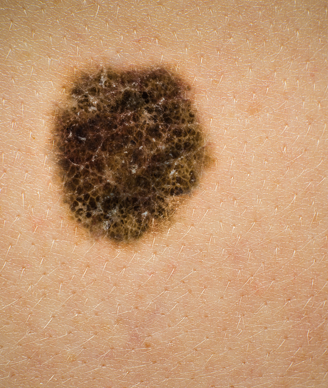Melanoma Risk Increased in CLL/SLL Patients
Results of a new study have indicated that the risk of developing melanoma may be almost doubled among certain survivors of chronic lymphocytic leukemia/small lymphocytic lymphoma.
Image © Australis Photography / Shutterstock.com

Results of a new study have indicated that the risk of developing melanoma may be almost doubled among survivors of chronic lymphocytic leukemia (CLL)/small lymphocytic lymphoma (SLL) who were treated with certain chemotherapeutic agents or who had specific immune-related medical conditions.
“Patients with CLL/SLL experience profound and prolonged immune dysfunction characterized by defective B-cell and T-cell function, which contributes to increased incidence of infections and autoimmune diseases,” wrote Clara J. K. Lam, MD, of the National Cancer Institute, and colleagues in the Journal of Clinical Oncology. “Our study results provide direct evidence for the importance of immune perturbation in explaining the excess of melanoma diagnoses observed in survivors of CLL/SLL.”
Survivors of non-Hodgkin lymphoma (NHL) are at an increased risk for developing secondary malignancies, particularly second melanoma. In this study, Lam and colleagues sought to explore factors that may explain the increased risk for melanoma among these patients.
They evaluated outcomes among 44,870 1-year survivors of primary NHL at age 66 to 83 years taken from 1992 to 2009 in the SEER-Medicare database. This search yielded 202 second melanoma cases among the survivors, almost half of which were survivors of CLL/SLL (n = 91).
Looking specifically at patients who survived CLL/SLL, the researchers found that the risk for melanoma was doubled to tripled among patients who received infused fludarabine-containing chemotherapy with or without rituximab (with rituximab: hazard ratio [HR], 1.92 [95% confidence interval (CI), 1.09–3.40]; without rituximab: HR, 2.92 [95% CI, 1.42–6.01]).
Results showed significantly increased risk for melanoma among those patients with T-cell activating autoimmune diseases diagnosed either before (HR, 2.27 [95% CI, 1.34–3.84]) or after their NHL diagnosis (HR, 2.92 [95% CI, 1.66–5.12]). Non-significant increases in melanoma risk were found in patients with B-cell activating conditions.
“We found little evidence that T cell– or B cell–activating autoimmune conditions were related to melanoma after non-CLL/SLL NHL, raising the possibility that these conditions may only contribute to the development of melanoma after NHL in the context of profound and prolonged immunosuppression, such as that seen after CLL/SLL,” the researchers wrote.
More specifically, results showed an increased risk for melanoma in patients diagnosed before CLL/SLL with Graves disease (HR, 2.66 [95% CI, 1.20–5.91]) or psoriasis (HR, 2.68 [95% CI, 1.21–5.91]), and after CLL/SLL diagnosis with chronic rheumatic heart disease (HR, 2.31 [95% CI, 1.23–4.36]), skin-related autoimmune conditions (HR, 1.87 [95% CI, 1.02-3.43]), and before and after CLL/SLL with asthma (before CLL/SLL: HR, 2.14 [95% CI, 1.13–4.02]; after CLL/SLL: HR, 3.24 [95% CI, 1.75–6.00]).
No similarly elevated risk for melanoma was found among patients with other lymphoma subtypes.
“Further research is needed to understand the biologic mechanisms behind the immune perturbations that lead to melanoma development and to determine if similar risks extend to younger survivors of NHL,” the researchers concluded.
Newsletter
Stay up to date on recent advances in the multidisciplinary approach to cancer.